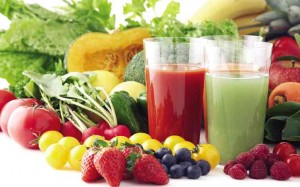
If you really want to stick to a healthy diet for life, then you should be choosing healthy and nutritious foods that you truly like, while practicing a sustainable and more flexible way of eating that will prevent deprivation and relapse.
But different diets and nutrition trends can influence your way of thinking. You can even become an extreme dieter (which can do more harm than good) without all the factors necessary for a well-balanced lifestyle.
It is particularly important to be aware of healthy eating trends so you know where to start, and how to be more flexible and practical to reach your health goals.
Vegetarian vs ‘flexitarian’
A study from the University of Oxford that was published early this year in the American Journal of Clinical Nutrition shows that the risk of hospitalization or death from heart disease is 32 percent lower in vegetarians than people who settle for fish and meat. Vegetarians had lower cholesterol levels and blood pressure, according to the researchers.
Strict vegans don’t consume animal and dairy products, so it is easier to lose weight, as long as they don’t consume too much fat from fried foods, alcohol and sweets. So, vegetarian diets are really low in total cholesterol, saturated fat and animal protein, and high in vitamins and minerals.
However, it is difficult for vegans to get complete protein, and they should really consume additional servings of food to meet daily calorie and nutrient requirements. It is best to meet with a dietician to discuss a healthy and complete vegetarian diet, especially if you have health problems.
A lot of people become attracted to the benefits of a vegetarian diet, but this may not work for all, because we are always exposed to animal products. Based on my experience and for most exercisers, it is hard to totally give up animal products, especially if you are physically active.
Flexitarian eating, a new eating approach to becoming a more flexible vegetarian, can now come into play. According to Dawn Jackson Blatner, RD, LDN, a dietitian and author of “The Flexitarian Diet,” flexitarian eating is intended for those who want to eat more vegetarian meals but find it too difficult to commit 100 percent of the time.
Blatner divided flexitarians into three: a beginner flexitarian eats two meatless meals a week; an advanced flexitarian eats three to four meatless meals a week; and an expert flexitarian eats five or more plant-only meals a week.
Organic vs the complete package
According to Wikipedia, organic foods are produced without modern synthetic inputs such as pesticides and fertilizer, and are not processed using irradiation, industrial solvents and food additives.
Compared to conventional foods, organic foods are more expensive, because these are thought of as safer due to the absence of toxic chemicals. But organic foods don’t contain less calories and more fiber than a conventional food product.
According to Sandy Todd Webster, fitness/nutrition researcher and editor in chief of IDEA’s publications, “organic” doesn’t always mean “healthy.” In fact, a study conducted by Cornell University’s Food and Brand Lab researchers revealed that an “organic” label could significantly change a person’s perception of taste, calorie and value.
Consumers always assume that a product labeled as “organic” is healthy. But aside from always looking for the “organic” term on food labels, it is extremely important to check nutrition labels.
If you are trying to lose weight and are conscious of your health, then check the total calories per serving, total fat, saturated fat, sodium and sugar of each product. A food product can be called organic, but it can also contain calories from fat and sugar. A flexible food shopper will always consider the product’s total package and not only be fixated on labels such as “organic,” “fat-free” or “sugar-free.” A fat-free food product may be high in sugar, and vice-versa.
Juicing vs whole foods
Since last year, most of the fitness people I know have bought juicers or order juiced veggies and fruits from a known source. Juicing vegetables and fruits is very popular nowadays. I was also tempted to get a juicer, but I thought, eating whole fruits and vegetables is healthier, more filling and cheaper, so, no need for one.
It is good to include plants and fruits in your diet through juicing, but only if that’s the best way to incorporate them for now. But if you really want to be a more practical, healthy eater long-term, you should always settle for whole, more natural foods.
Juicing vegetables and fruits is great, but eating whole foods is healthier and more practical because it saves you time, money and effort.
According to Lourdes Castro, MS, RD, a US-based chef and nutrition expert, the new standard is stem-to-root eating, where the plant is eaten as intact and whole as possible, and you don’t remove the skins of fruits and veggies to preserve the fiber, vitamins and minerals. Also, a study published in The Journal of Nutrition (2008) shows that whole fruits and vegetables have high water content, a factor responsible for one’s fullness and satiety, which can contribute to weight-control efforts.
E-mail the author at mitchfelipe@gmail.com. Follow her on Twitter @mitchfelipe.